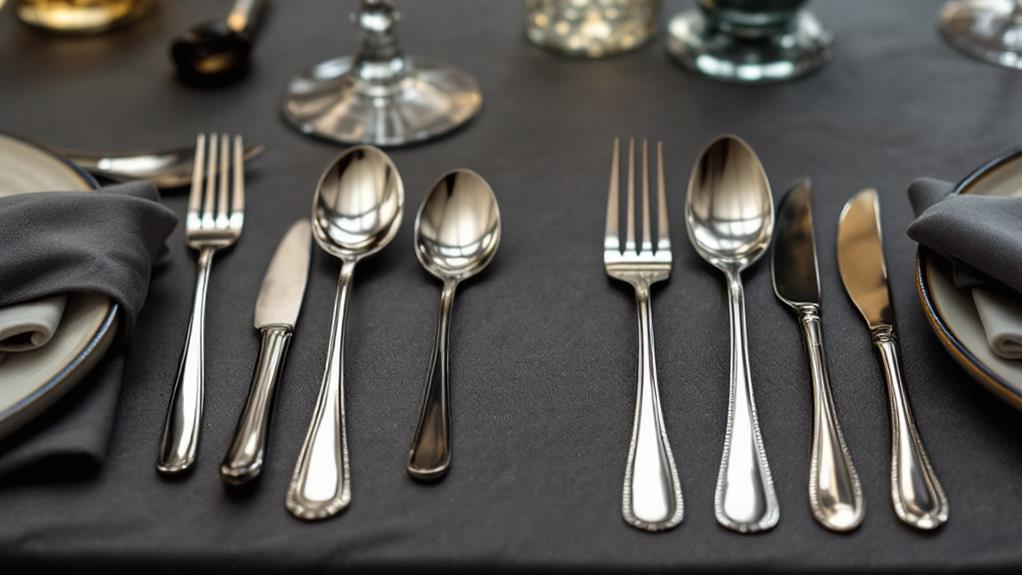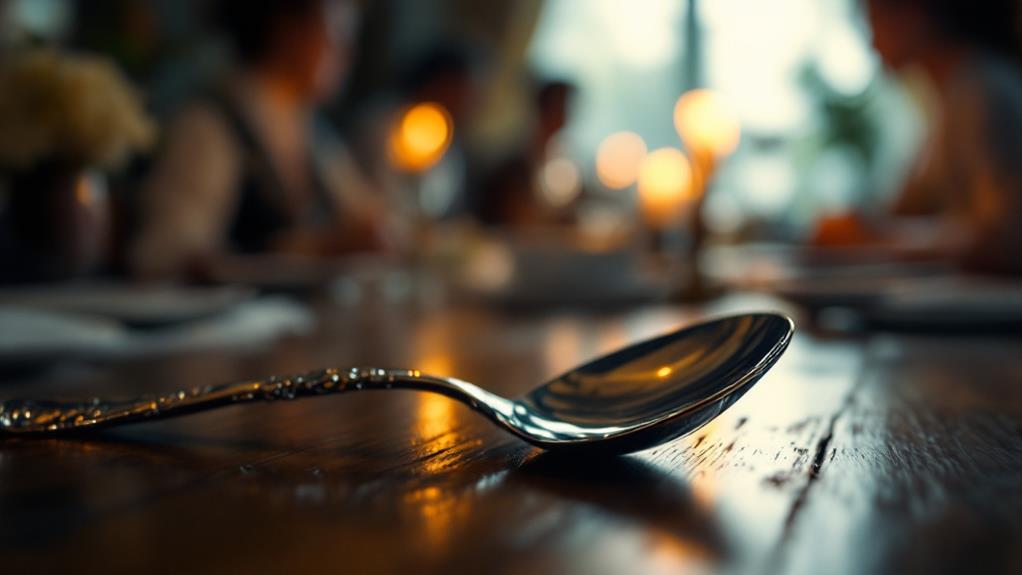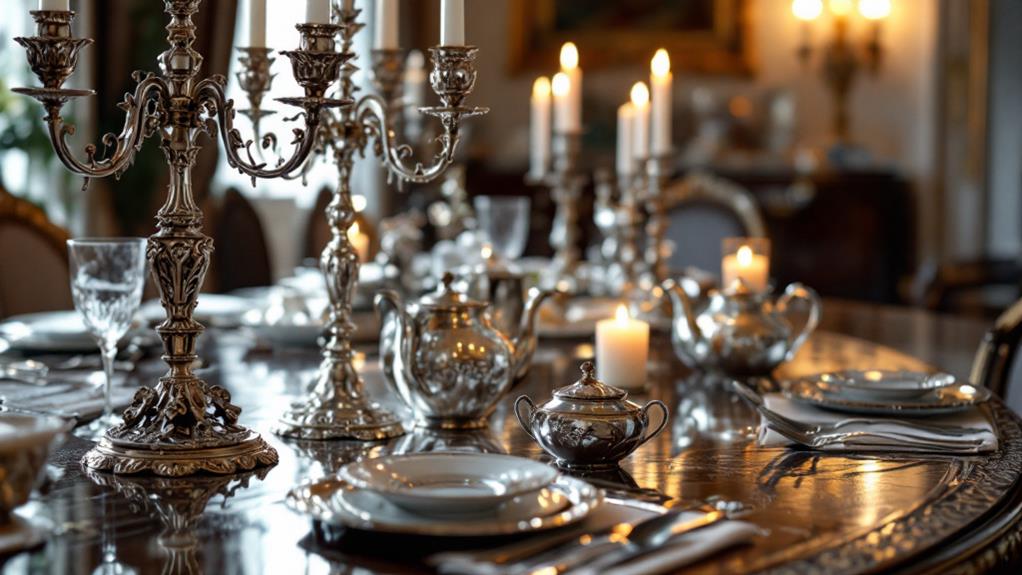Why Was Silverware Made of Silver?
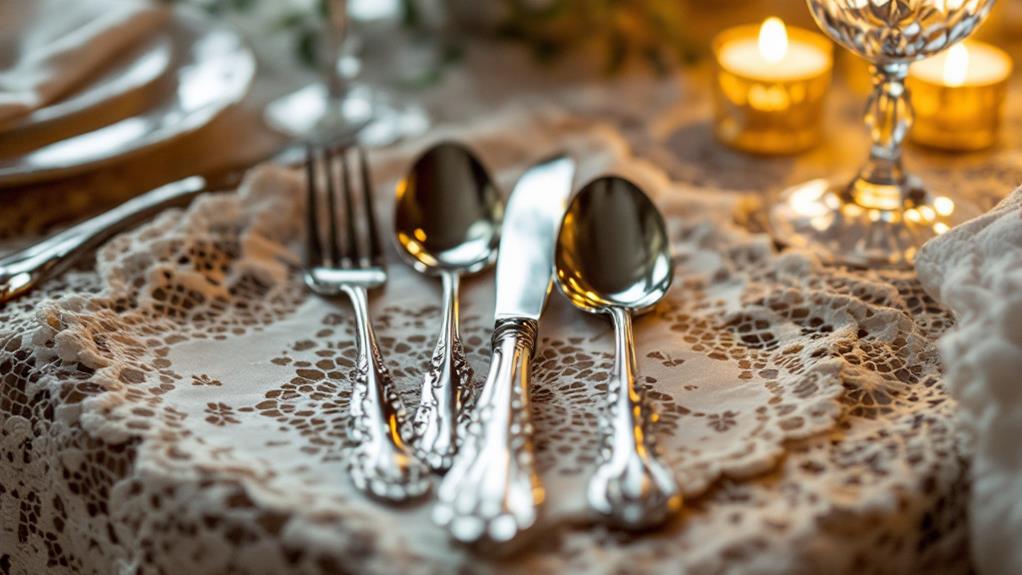
Silverware was made of silver for several captivating reasons. You'll find that its historical significance dates back to ancient civilizations, where it graced royal banquets. Silver's natural antibacterial properties made it an ideal choice for dining utensils, promoting cleanliness and health. It also served as a powerful symbol of wealth and status, showcasing the owner's affluence. The durability and longevity of silver guaranteed that pieces could be passed down through generations. Finally, its aesthetic appeal and the craftsmanship involved in creating intricate designs raised silver tableware to works of art. There's much more to uncover about silver's role in dining history.
Historical Significance of Silver Tableware
Silver tableware's historical roots stretch back to ancient times, with Roman Empire banquets showcasing its early prominence. Throughout history, silver has been the material of choice for crafting elegant dining vessels and utensils. You'd find that silver tableware was used exclusively for serving food and drinks until porcelain made its way to Europe.
The significance of silver in dining goes beyond its practical use. Owning silver tableware was a clear symbol of wealth and status across many cultures. You could instantly recognize a person's social standing by the silver plates and utensils adorning their table. This association with prestige has persisted through the ages.
Silver's allure in dining extends to its artistic value. Craftsmen have long created intricate designs on silver vessels, turning them into coveted works of art. Collectors have prized these pieces for their beauty and historical importance. The enduring appeal of silver tableware reflects rich cultural traditions and continues to fascinate people today. Its aesthetic beauty, historic merit, investment value, and even health benefits have secured its lasting place in dining history.
Antibacterial Properties of Silver
While silver's historical significance and aesthetic appeal are undeniable, its practical benefits extend far beyond mere beauty. The antibacterial properties of silver have long been recognized and harnessed in various applications, including household items like silver cutlery.
Silver's unique chemical structure prevents bacteria from building up on its surface, making it an excellent choice for dining utensils. When you use silver cutlery, you're not just enjoying a luxurious dining experience; you're also benefiting from its natural ability to fight harmful microorganisms. This precious metal has been shown to stimulate new cell growth and combat antibiotic-resistant super-pathogens, offering a range of health benefits.
Daily use of silver was employed not only for its aesthetic appeal but also for its potential to enhance your immune system, improve metabolic function, and prevent anti-inflammatory diseases. The antimicrobial properties of silver help maintain cleaner dining surfaces, promoting overall hygiene during meals. By incorporating silver into your everyday dining routine, you're tapping into an age-old practice that combines elegance with practical health benefits, showcasing why silver was used extensively in tableware throughout history.
Symbol of Wealth and Status
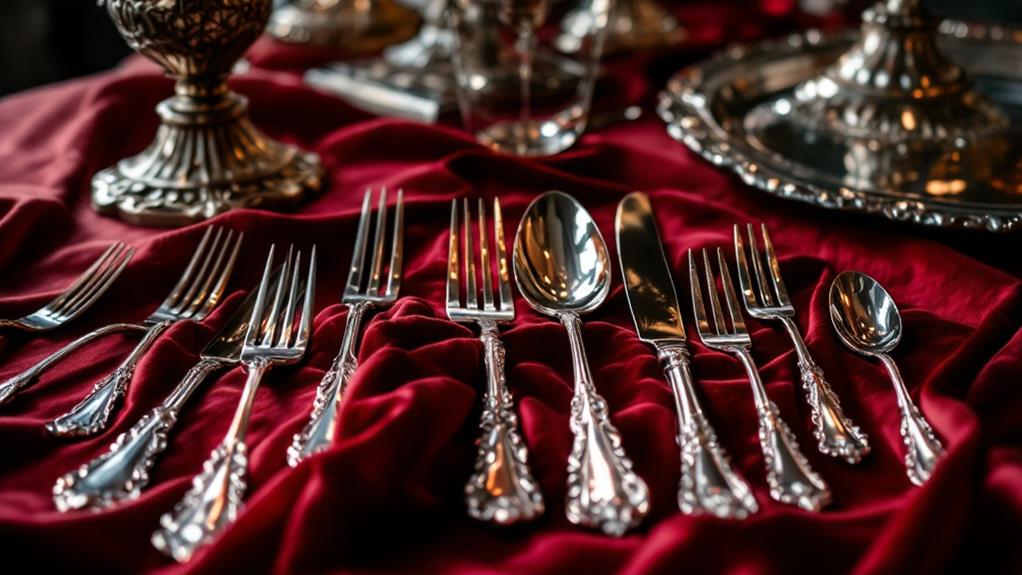
Throughout history, the possession of silver tableware has stood out as a clear indicator of one's social standing and affluence. From ancient times through the Middle Ages and beyond, silver's rarity and value made it an exclusive material used to make utensils and dishware for the wealthy elite. The history of silver in tableware reflects its enduring association with luxury and refinement.
You'll find that silver's symbolic power extended beyond mere eating implements. Religious institutions and nobility alike prized silver for its use in ceremonial objects and decorative pieces, further cementing its connection to prestige and authority. As European aristocracy flourished in the 16th to 18th centuries, the display of silver tableware became an essential way to showcase one's status.
While silver coins were used in commerce, the metal's application in dining settings set it apart as a symbol of opulence. It wasn't until the advent of more affordable alternatives like stainless steel that silver's dominance in cutlery began to wane. However, its legacy as a mark of wealth and sophistication persists to this day, with many still cherishing silver tableware as heirlooms and luxury items.
Durability and Longevity
Beyond its aesthetic appeal, silver's exceptional durability has long been a key factor in its popularity for tableware. When you invest in silver flatware, you're acquiring pieces that can withstand the test of time. Whether it's Sterling silver or Silver Plate, the material's resistance to corrosion safeguards that your silverware will maintain its functionality and luster for generations.
The longevity of silver tableware isn't just about its ability to resist wear and tear. Silver's malleability allows skilled artisans to create intricate designs that remain intact over the years. This durability makes silver flatware a precious investment, as it can be passed down through families, becoming cherished heirlooms.
Used silver pieces often retain their quality, demonstrating the material's resilience. Silver's inherent resistance to oxidation and tarnishing means your tableware will continue to shine even with frequent use. With proper care, you'll find that your silver dining implements can last for centuries, maintaining their beauty and functionality. This remarkable durability is why silverware made of silver has been prized for so long, offering both practicality and lasting value to those who choose it for their dining tables.
Aesthetic Appeal and Craftsmanship
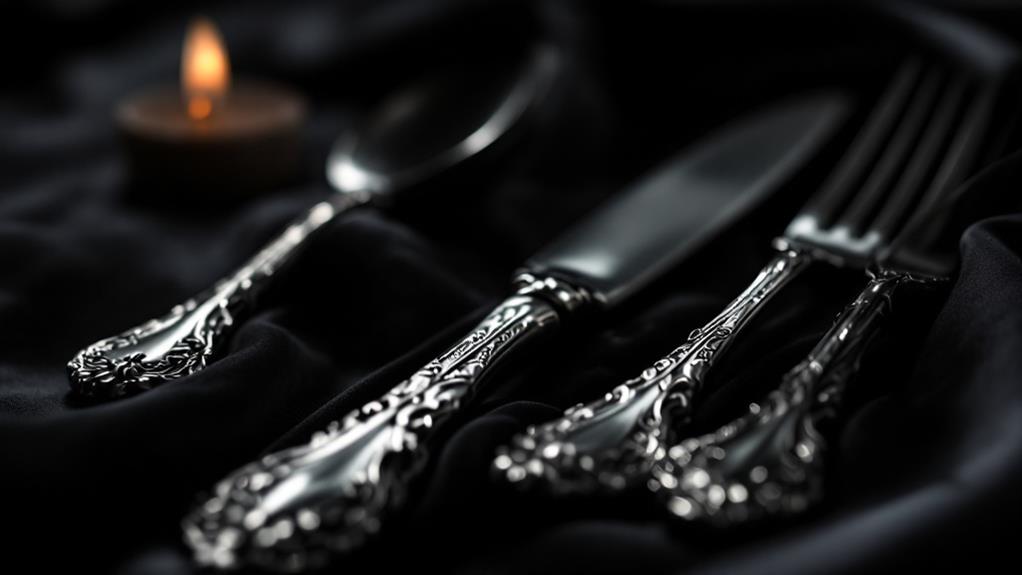
Gleaming with a lustrous sheen, silver tableware ensnares the eye and uplifts any dining experience. The aesthetic appeal of silver has enchanted cultures worldwide since Antiquity, leading to the creation of exquisite pieces that showcase refined craftsmanship. You'll find stunning examples of silver service at the Metropolitan Museum of Art in New York, where collections highlight the material's enduring allure.
The use of silver in tableware goes beyond mere functionality, offering:
- A visual feast: The distinctive white, shiny appearance of silver adds elegance to any table setting.
- Artistic expression: Silverware designs reflect changing stylistic movements, from ornate Sheffield Plate to sleek modern creations.
- Status symbol: Possessing silver tableware has long been associated with wealth and refinement.
Craftsmen have honed their skills over centuries, creating intricate designs that reshape simple utensils into works of art. You might encounter a beautifully crafted spoon described as "one of a pair," highlighting the attention to detail in matching sets. The natural patina that develops with use only enhances silver's charm, making each piece uniquely beautiful.

